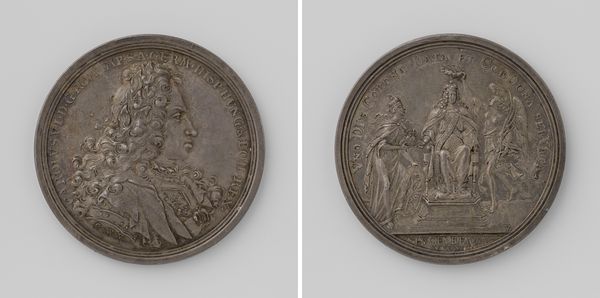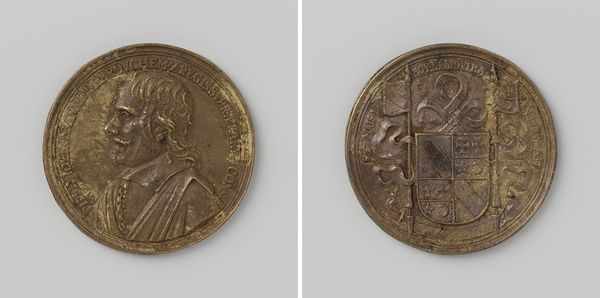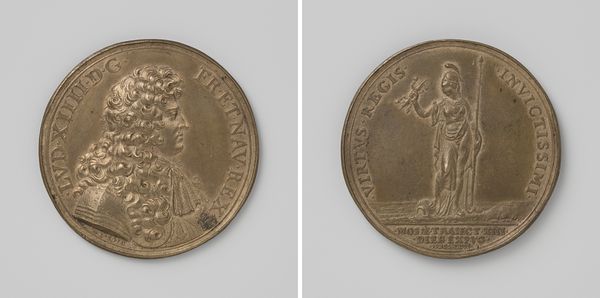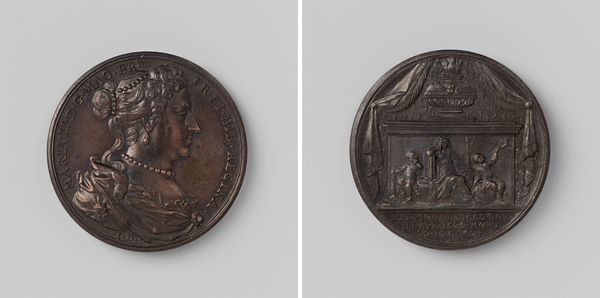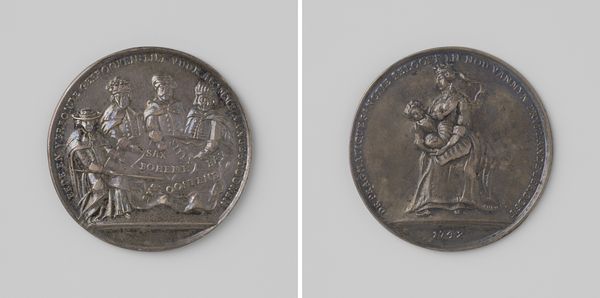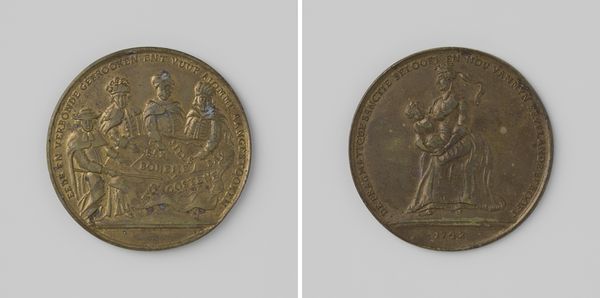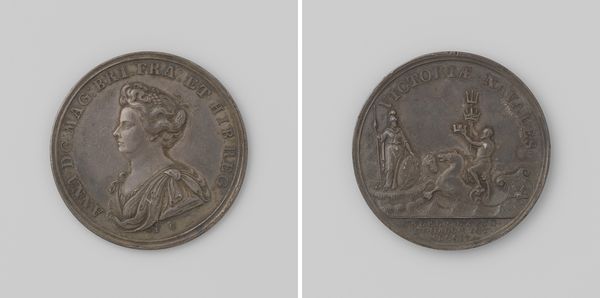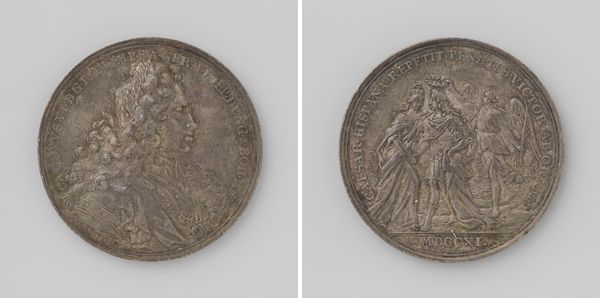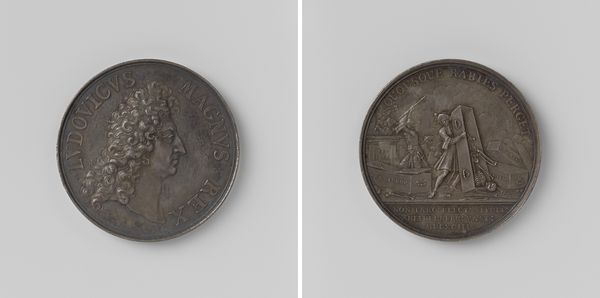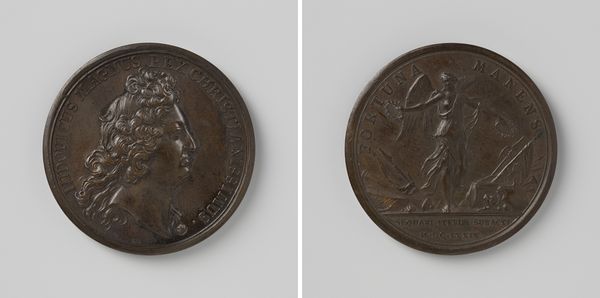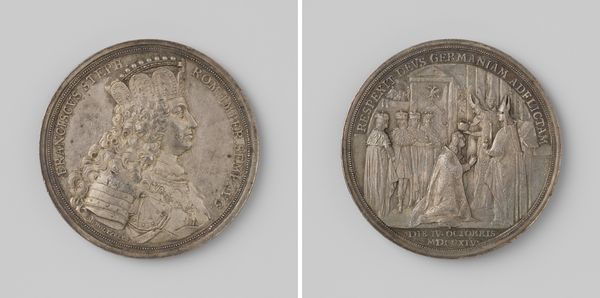
relief, bronze, sculpture
#
portrait
#
medieval
#
baroque
#
sculpture
#
relief
#
bronze
#
sculpture
#
history-painting
Dimensions: diameter 5.3 cm, weight 525 gr
Copyright: Rijks Museum: Open Domain
Curator: Standing here, one can really admire the dual-sided bronze relief crafted by Guillaume Dupré around 1625, titled "Maria de' Medici, Queen of France, and the Royal Family." Editor: Whoa, that's old school royalty, and it has got me thinking—how heavy is that thing? It gives off this powerful aura of age and importance, like an antique coin you might discover. Curator: Dupré certainly understood the weight of representation. The choice of bronze, a material so connected with antiquity and power, is no accident. Think about the labor involved: mining, smelting, casting... it's a statement about value, not just monetary, but cultural. The circulation of pieces like this served to communicate status but was also limited to courtly circles. Editor: Makes you think about how royals saw themselves. One side depicts a stately portrait. It almost seems like it is a romantic idealisation, all perfect posture, pearls and composure, versus this rather lively image of figures on the reverse. The composition itself it feels quite…packed. Curator: Indeed. That 'packed' composition points towards a key aspect of Baroque aesthetics; abundance and dynamism. Look closely: It’s a history painting compressed onto a small circular plane, probably intended to memorialize Maria's position, or, shall we say, legitimize her royal descendancy and place her and her family in a place of influence for a broader courtly public. Editor: Hmm, there's something a bit... claustrophobic about it too. Maybe it’s just my modern perspective, but that ornate detailing feels almost suffocating. Were the elites of the period actually that detached from ordinary folk? Curator: This is an artifact reflecting power relations. Court artists like Dupré, were commissioned to express specific views, celebrating dynastic strength, and cementing the Queen’s place in the political landscape, reflecting a specific hierarchical and deeply political organization of society, so naturally that distance existed. Editor: Yeah, you are right... Seeing this artwork, makes you reflect on the powerful social-economic implications. Curator: Ultimately, this bronze relief functions as both a propaganda piece and a masterful display of craftsmanship of its time, demonstrating that art often serves as a visual representation of intricate societal narratives.
Comments
No comments
Be the first to comment and join the conversation on the ultimate creative platform.
